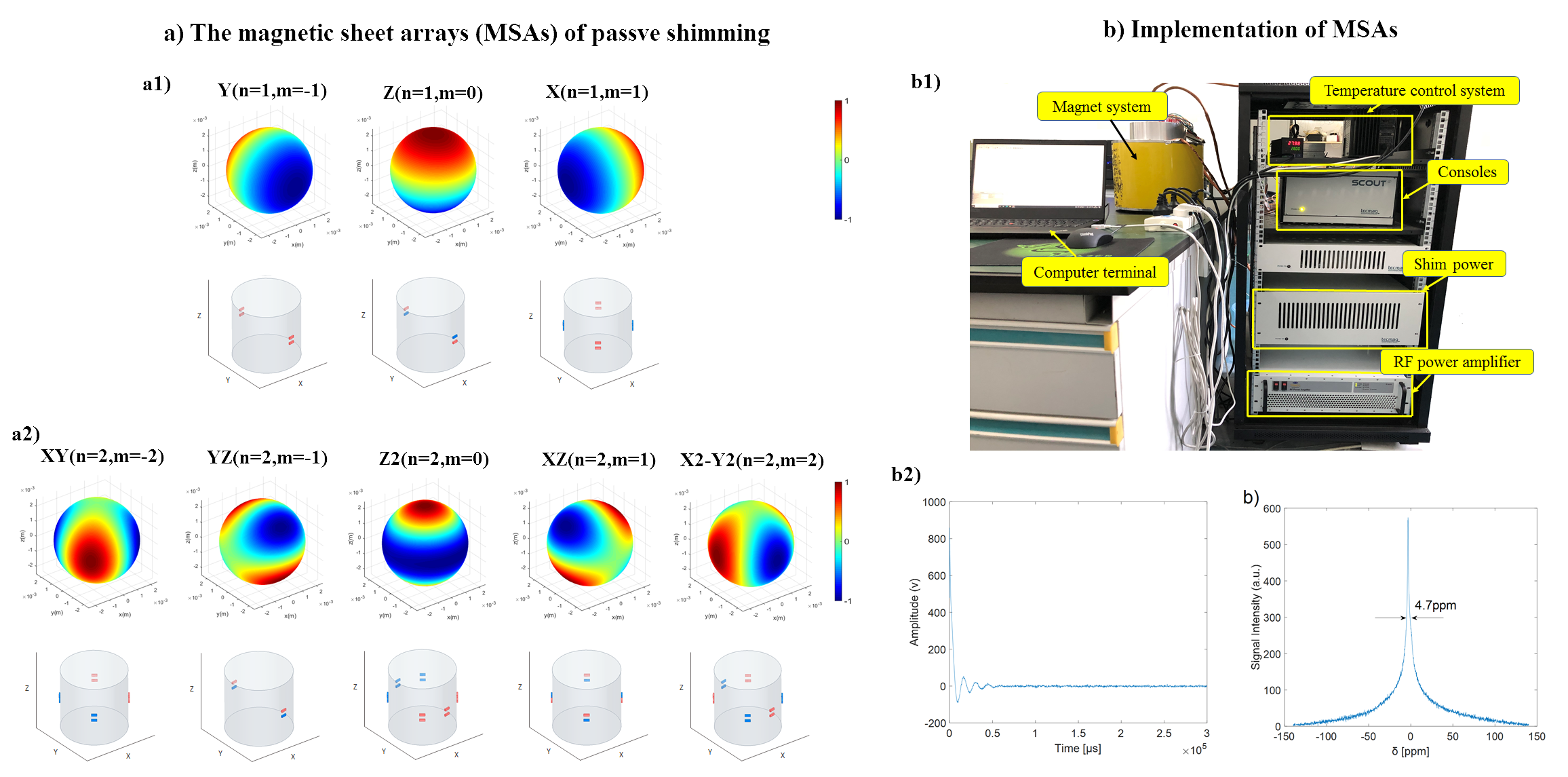Benchtop Nuclear Magnetic Resonance (NMR) instruments has huge application scenarios in the fields of food safety, on-line rapid component analysis in pharmaceutical, biological, and chemical laboratories, drug detection, education and teaching.
Dipolar cylindrical Halbach magnet (Halbach magnet) as a high-performance magnet structure has become the main magnet structure for benchtop NMR spectroscopy equipment due to its high material utilization and high magnetic field homogeneity.
However, due to its complex structure, various errors in their processing lead to poor magnetic field homogeneity which seriously affects the signal quality of magnetic resonance and limits the development of benchtop magnetic resonance spectrometer equipment based on Halbach magnets in China.
Benchtop magnetic resonance spectroscopy group of YANG Xiaodong’s team of Suzhou Institute of Biomedical Engineering and Technology (SIBET) proposed a passive shimming (PS) method for Halbach magnet.
Based on the decomposition and construction of spherical harmonic function, YANG’s team designed the shimming magnetic sheet array generating each harmonic within the 3rd order, and constructed the field diagram analysis of shimming array with different sizes and positions to achieve fast magnetic field compensation.
The study also gave practical operation and test results of this method on Halbach magnets.
"In the 0.5T-Halbach PS experiment, the magnetic field homogeneity improved by two orders of magnitude compared to the initial field, improving the homogeneity to 4.7ppm,” said YANG.
In another set of 0.93T-Halbach magnets, an order of magnitude improvement in homogeneity was also achieved, from 1103ppm to 125ppm, verifying the effectiveness and reproducibility of the proposed method for improving the magnetic field homogeneity.
The PS magnetic sheet array proposed in this work achieves efficient compensation of the magnetic field homogeneity of Halbach magnets. “This provides strong support for the independent development of high-resolution permanent magnetic resonance spectrometer in China,” said YU Yingcong, president of Wenzhou People’s Hospital and also another corresponding author of the study.
The team has built a high-resolution magnetic resonance platform based on the 0.5T-Halbach magnet after PS. “We will conduct experiments for related applications next to promote the development of the research results in relevant applications,” said WANG Ya, first author of the study.
Related research results were published in the Journal of Magnetic Resonance entitled "A passive shimming method for Halbach magnet based on magnetic sheet arrays".

Fig. 1 PS research based on magnetic sheet array. a) Magnetic sheet array; b) Implementation platform and PS results. (Image by SIBET)
Contact
XIAO Xintong
Suzhou Institute of Biomedical Engineering and Technology, Chinese Academy of Sciences (http://www.sibet.cas.cn/)
Phone: 86-512-69588013
E-mail: xiaoxt@sibet.ac.cn